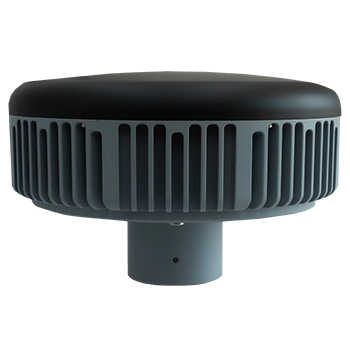For navigation, timing and communication, today GPS and GNSS signals are at a critical point. Signals with such critical importance of course need to be protected against jamming and interference, uninterrupted and reliable. At this point CRPA antennas come into play. CRPA antennas ensure that GPS and GNSS signals are received uninterrupted and securely. In this content we will examine what is a CRPA antenna? Why are CRPA antennas so important?
What is a CRPA Antenna
CRPA Antenna is actually an abbreviation. The original form is Controlled Reception Pattern Antenna, a high-level antenna system developed to protect GPS and GNSS signals from interferences and jammers.
If we summarize it like this, it will be easier to understand,
A GPS antenna (standard) receives signals equally from all directions, therefore it may not be secure. CRPA antennas, on the other hand, only receive satellite signals and reject unwanted interferences.
That’s why CRPA antennas are indispensable in defense, aviation and security applications.
How Does a CRPA Antenna Work?
CRPA Antenna uses digital beamforming as a technology while operating. With multiple antenna elements, it has the capability to adjust the reception direction in real time through algorithms.
CRPA antennas;
- Detect the direction of jamming signals,
- Create blind spots in these directions,
- At the same time, continue to track the correct satellites and receive data.
When we look at it, CRPA antennas continue to provide accurate positioning data even under intense jamming.
CRPA Antenna Design
Although CRPA antenna design may seem mechanically simple, it is very complex inside. CRPA antennas can generally have a structure with 4-7 or more antennas depending on the option. It has an RF front end that amplifies and filters the signal. With GPS receiver integration, it provides connection to navigation systems.
As I said, although CRPA antennas may look quite simple in external design, their internal design can be quite complex.

Source : https://www.tualcom.com/gps-gnss-anti-jam-crpa/tualaj-8300-d/
CRPA Antenna Price
CRPA antenna prices are not fixed. The prices of CRPA antennas can vary depending on many factors. The main factors that stand out are as follows,
- Number of antennas (Using more antennas provides higher accuracy)
- Supported frequency bands (GPS L1, L2, Galileo, GLONASS, etc.)
- Usage area (Military versions can be more expensive than civilian versions)
Considering these, the prices of CRPA antennas can reach tens of thousands of dollars. This is only an estimate from us and market research, but the exact price can be provided by the manufacturer companies.
Google Search (CRPA Antenna)
CRPA Antenna Tualcom
CRPA GPS Antenna vs. Standard GPS Antenna
| Feature | Standard GPS Antenna | CRPA GPS Antenna |
|---|---|---|
| Signal Protection | None | High (anti-jamming) |
| Cost | Low | High |
| Applications | Everyday GPS devices | Defense, aerospace, high-security systems |
| Accuracy under Jamming | Very poor | Maintains accuracy |
Applications of CRPA Antennas
CRPA antennas are widely used in:
Critical Infrastructure: Timing for financial systems, power grids, and telecoms
Military and Defense: Protecting navigation in contested environments
Aerospace: Aircraft navigation and timing
Maritime: Ships and submarines operating in GPS-denied areas
What is a CRPA antenna?
A Controlled Reception Pattern Antenna designed to protect GNSS signals from jamming.
How does a CRPA antenna work?
By using multiple antenna elements and digital beamforming to nullify interference while keeping track of satellite signals.
Why is a CRPA GPS antenna expensive?
Because of advanced hardware, multi-element design, and real-time processing technology.
Conclusion
CRPA antennas are a key technology for ensuring secure, reliable GPS/GNSS navigation in environments where jamming is a real threat. While they are complex and costly, their importance in defense, aerospace, and critical infrastructure cannot be overstated.
